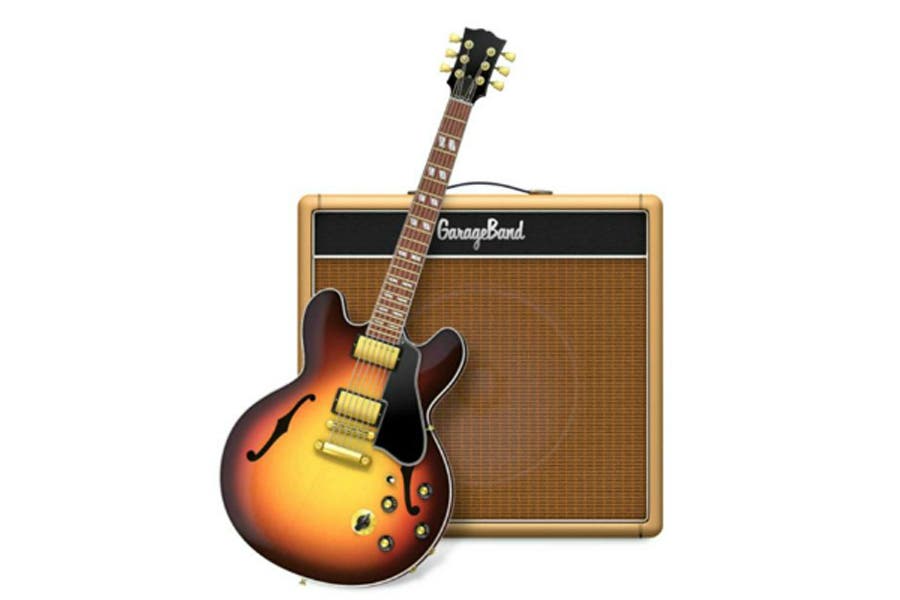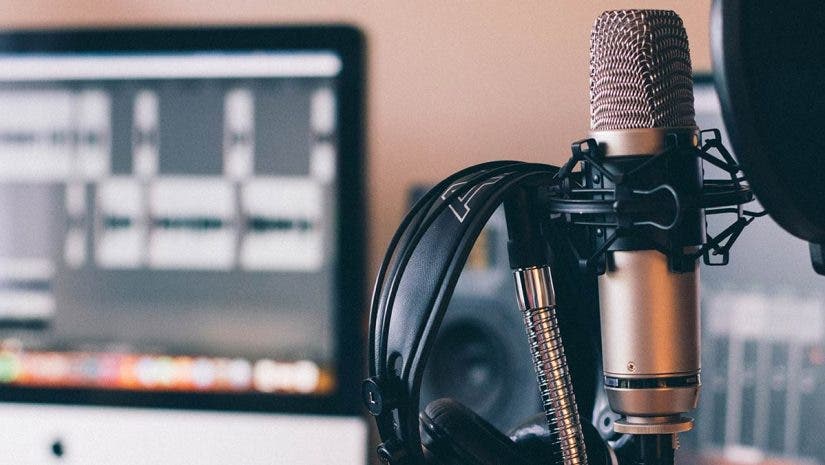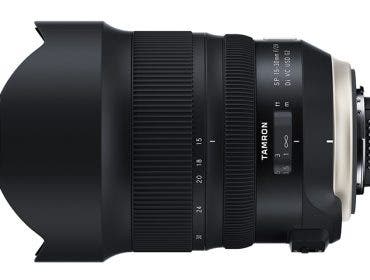You may already know that in order to create a podcast, you’ll need a few important pieces of hardware: good quality podcast headphones for monitoring your audio quality and levels, reliable podcast microphones for you and your guest/s, a podcast mixer that will allow you to record from multiple audio sources, an audio interface to convert sound signals into digital format, and a laptop that’s speedy enough to handle heavy audio files for fast and convenient file transfers, editing, and storage.
Aside from those, you’ll definitely need to have one main podcast software where you can perform all of the necessary digital functions in order to make your track sound as good as you want it to be. You can always record your audio elsewhere, but being able to record them directly into a software where you will be editing them helps save you a lot of time during post-production.
As for the “right” software, the best will always be what you’re most comfortable with using. It’s important that you get to know each available recording software and see which one suits your needs best.
What is podcast recording software?
Podcast recording software allows you to capture audio from a microphone (or microphones) and record it. These types of applications are also called DAW software, short for digital audio workstation. DAWs are comprehensive audio production suites capable of recording, editing, mixing, and mastering audio for podcasts, film/TV post-production, and music.
Ultimately, any software that lets you record audio into it can be considered podcast recording software. However, there are a specific few designed with podcasting and broadcast in mind.
What to look for in podcast recording software?
There are several things to consider in regards to podcast recording software. The first is price. There are plenty of free options, which is great if you’re just starting a podcast. These free podcast apps will let you get the hang of the process, see if it’s really something you want to do, and let you figure out what features you might need in paid software.
The next thing to consider when creating a podcast is the interface. Many paid options have better interfaces than their free counterparts. These can save you time and hassle in the long run.
The last thing to think about is the overall popularity of the software. Popular doesn’t necessarily mean “good”. However, if you’re working with podcast software that has a large user base, it likely has a considerable amount of online support from other users and the company itself. So if you have an issue or a question, the answer will be easy to find.
What are the different types of podcast recording software?
The main kinds of podcast recording software you’ll deal with are dedicated DAWs, such as those most popular for music production, and video editing software with audio capabilities. Some DAWs (like Pro Tools, for example) also support video import. This allows you to sync, edit, and mix audio to picture.
However, you cannot edit the imported video clip itself, and will need extra video software to consolidate the various parts. Adobe Premiere is a great example of an advanced video editing application. It also lets you record and edit audio, or import it from a DAW.
Less common is software like Hindenburg, made specifically for podcasting, voiceover, and broadcast.
6 Best Podcast Recording Software
Below you’ll find five of the most popular recording software programs that millions of podcasters are using to record, edit, and master their tracks in order to transform them into high-quality podcast episodes.
To help you choose, we’ve also included brief tutorial videos that show how you can use each software to record and edit your podcasts.
1. Logic Pro

Compatibility: Mac
The Logic Pro is a common favorite among podcasters and music producers alike. It’s a full-featured audio software with a fairly simple interface that displays all of the basic functions that you need right on the screen. Should you wish to upgrade and access its full suite of features, you can simply enable it by ticking the Advanced Tools check box in Settings.
This Apple audio software can be linked to the Logic Remote App for iPhone or iPad, and its files can be opened in GarageBand.
Overall, its beginner-friendly workspace and multiple advanced functionalities make it an ideal software choice for both newbies and experienced podcasters. The only catch is that it requires a one-time purchase of $200.
Key Features:
- Full digital audio workstation if you want to expand to other audio projects
- Record audio and MIDI tracks
- Extensive organizational features for alternate takes
- Adjust the length and timing of a recording
- Extensive plugins to adjust the overall sound of your recording
- Elaborate synthesized reverb effects to mimic different acoustic spaces
Pros:
- Extremely popular, letting you easily find answers to questions online
- Extensive plugins to help with multiple aspects of your podcast editing
- Should interface with just about any podcast equipment
- Good value compared to many similarly powerful DAWs
- If you’re used to GarageBand, you’re one step closer to learning Logic Pro
2. Adobe Audition

Compatibility: Windows & Mac
Adobe Audition CC has definitely come a long way since Adobe acquired it in 2003, back when it was the Cool Edit Pro on Windows. The current version is now fully capable of producing music and podcasts, as well as editing and mastering tracks with its many background noise reduction features, EQ, and more. Another notable feature is the batch processing function, which allows you to apply the same group of effects to separate files.
You can get this digital audio workstation for $20.99/month, but you can access it for free if you are already subscribed to the full Creative Cloud Suite. Additionally, you’ll find a lot of easy tutorials online, including the one below.
Key Features:
- Extensive audio recovery and noise reduction tools
- Big and easily adjustable waveform editor
- Interacts well with other Adobe programs like Premiere Pro
- Regularly updated with Adobe’s Creative Cloud subscription
- Many complex processes are explained step-by-step
- Essential Sound panel automates many key audio adjustment processes
Pros:
- Perfect as part of an editing process for big projects
- Noise-reduction tools are impressive
- Easy to add adjustments and experiment with different mixes
- Designed for more vocals/podcasts than other DAWs that are designed for music.
- Easy to setup “Macros” that let you apply regularly-used effects/adjustments with just a few clicks
3. GarageBand

Compatibility: Mac
GarageBand has long been one of the most popular free music production software for Mac. Its user-friendly interface matches that of Logic Pro and is recommended for first-timers, although many experienced podcasters have stuck with GarageBand for its wide range of features.
With this digital audio workstation, you can easily create separate tracks for vocals and music—whether it be for your intros, outros, or even your ad spots—and modify and move them around as you wish. Aside from the basics, you can enable plug-ins like EQ, compression, and noise gates for each of your tracks. And if you’re going to be podcasting, these are already more than enough.
Key Features:
- Works on Mac, iPhone, and iPad
- Can import MIDI files
- Easy to understand interface for those new to podcasting
- Built-in EQ, compression, and noise gate tools
- Extensive instruments and sound loops if you want to add music
Pros:
- Free! (If you own an Mac)
- Great for anyone just starting a podcast
- Extremely popular, so there are numerous tutorials and answers available online
- Great price
- Record and edit on-the-go with mobile versions
- Will give you some familiarity to Logic Pro if you ever upgrade to a full professional DAW
4. Audacity

Compatibility: Windows & Mac
Like Adobe Audition, Audacity is a cross-platform (which means it works on multiple operating systems) audio editing software. Additionally, like GarageBand, it’s completely free! What probably sets it apart is that there’s a bit of a learning curve for it, but it remains to be a super popular podcast audio editor among beginner and professional podcasters and producers alike.
Audacity is equipped with useful and powerful features, such as Silence Finder, Truncate Silence, Sync-Lock, as well as saveable EQ and effects, multiple import and export options (including MP3, WAV, AIF), and other audio manipulation and organization functions. The software is also regularly updated, so you can enjoy its full suite of pro tools on any Mac or Windows computer.
Key Features:
- Works on Windows, Mac, and Linux
- Open source podcast recording software
- Elaborate editing and mixing options
- Silence Finder and Truncate Silence tools to easily trim your recordings
- Semi-automated wizards to help mix and edit your podcast
- Extensive plugin support to give you even more podcast editing options
Pros:
- Works great for beginner and professional podcasters
- Extensive online help resources
- Free
- Regularly updated by a huge, international team
- Works on pretty much any computer
- Can import just about any audio format, and output in a variety of formats and sample rates
5. Hindenburg Journalist

Compatibility: Windows & Mac
Hindenburg actually owns a family of audio production and editing programs, with the Journalist being their most recommended software for entry-level podcasters. For just $95, Hindenburg helps you put emphasis on your storytelling as you piece clips and interviews together to create a cohesive track.
Aside from offering basic recording and editing functions, it boasts of other powerful features such as the easy-to-use Noise Reduction effect, which automatically identifies persistent noise, hums, and hisses, and allows you to eliminate them by simply turning up the Noise Reduction dial.
Additionally, it conveniently integrates with a few podcast hosting providers.
Key Features:
- Easy-to-use noise reduction and other podcast editing effects
- Integrates with podcast hosting services
- Designed with podcasters and radio news reporters in mind
- Streamlined interface
- Auto leveler automatically fixes your podcast’s sound levels
- Clipboard group feature helps make rearranging multiple clips easy
- Works on Mac and PC
Pros:
- Non-destructive editing lets you undo cuts even after if you’ve done other editing
- Speeds up common tasks with an easy-to-understand interface
- A focused experience without the music-editing features of many other podcast recording software products
- Background processes automatically adjust your imported audio to sound as good as possible
6. Hindenburg Pro
Hindenburg Pro automates many of the meticulous recording and editing processes involved with podcasting and voiceover. Every feature is designed to trivialize the most common podcasting challenges, such as uneven volumes from speaker to speaker, noisy recordings, and more.
Key Features:
- Plug-and-play capability with your favorite audio interface
- Import audio and video files
- Auto-level each clip for a cohesive volume across the entire recording
- Multi-track recording for podcasts with multiple guests
Pros:
- Built-in effects for mixing
- Noise reduction to clean up messy recordings
- One-click publishing lets you upload your podcast to your favorite host(s) straight from Hindenburg
Best podcast recording software for video
Riverside.fm
Riverside is an ideal remote audio and video recording studio. It lets up to eight users record anywhere in the world, with local video resolution up to 4K for each guest, as well as uncompressed 48kHZ audio. It’s incredibly easy to use; as a host, just invite your guests to the podcast with a link, and they can join the show from their browser.
Garageband & iMovie
For Apple users, it’s hard to beat Garageband and iMovie as a free duo for audio and video podcast production. Unlike audio software, which allows real-time recording, video recording is typically done “offline” and requires upload into a separate piece of software for editing. With Garageband, you can record and edit the audio portion of your show, and then integrate it with video in iMovie. The latter’s features are impressive for a free app, and will help you define the look and sound of your podcast.
What Other Podcast Equipment Do You Need?
Don’t underestimate the power of a good podcasting microphone. Once you get the hang of creating a podcast and decide you definitely want to do it, start thinking about adding a pro-level mic to your podcast studio. Every professional podcaster likely has a microphone they love, and eventually you will too. A better mic will elevate your podcast from what might sound like an amateur’s hobby to something that sounds professionally produced.
Another important podcast equipment decision is to improve the sound of your room. No matter where you record your podcast, it’s vital to consider the acoustics. While this is a topic that literally fills volumes of textbooks, even a few small steps can improve the sound of your recordings and reduce your podcast editing time requirements.
Adding book-filled bookcases and thick carpets, and minimizing large, flat surfaces will go a long way toward reducing reverb/echo. With some thought and planning, you can transform the room where you record your podcast into something more like a professional podcast studio.
Learn More About Podcasting
For more guides on podcasting, you can check our tips on starting a podcast, from recording to post-production. Once you’re done, you can proceed to get your podcast hosted and may want to submit it to iTunes and Spotify for maximum exposure. Have fun!






